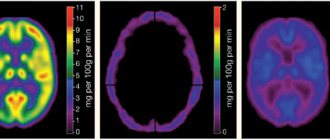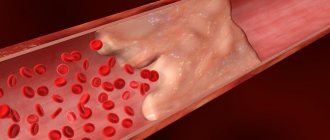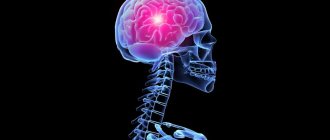Anonymously
Around the clock
Attention! The material contains information about substances, the use of which can cause serious harm to your health!
Recognizing a person who uses drugs is not that difficult. Drug addiction rapidly destroys the human body, which leads to serious changes in its appearance.
- What drug addicts look like
- Drug addict face
- Acne in drug addicts
- Ulcers
- The eyes of a drug addict
- Why do drug addicts have red eyes?
- Dilated pupils
- No reaction to light
- Bruises under the eyes
- Drug addict look
- Heroin eyes
- Hashish eyes
- Eyes under pills
- Hands of a drug addict
- Brushes
- Swollen
- Vienna
- Injection marks
- Addict's legs
- Addict's nails
- Drug addict's teeth
- Addict's body
- Addict's groin
- Addict skin
- The body of a drug addict
- What do drug addicts turn into?
- Character of a drug addict
- Appearance of a drug addict
- Drug addict behavior
- Drug addict sniffles
- Constantly smiling
- The gait of a drug addict
- Why do drug addicts itch?
- How does a drug addict talk?
- Signs of a typical drug addict
- Behavior of a former drug addict
- Social portrait
- Psychology of a drug addict
- People who are drug addicts: what they look like (photo)
We will select an individual treatment plan
Free consultation 8-800-200-27-23
What drug addicts look like
Drug addiction has a detrimental effect not only on the consciousness of the person who uses psychoactive substances, but also on all systems of the body. It is important to know how to understand that a person is an addict: only in this case will you be able to promptly pay attention to the existing problem and, together with the addict, find a solution to it.
Drug addict face
The classic image of a drug addict includes being thin, having sores on the hands and face, a pale skin tone, and bags under the eyes. Indeed: the face of a drug addict has an unnaturally pale or bluish tint, very often ulcers and rashes appear in the cheeks and forehead. Due to vitamin deficiency, you can see pockets in the corners of your mouth, and your lips are dry and cracked.
Acne in drug addicts
The effects of using synthetic drugs are most noticeable on the skin: massive areas with rashes often appear in the cheeks, forehead and chin. Acne most often occurs in people addicted to methamphetamine.
Ulcers
As mentioned above, the skin of a drug addict becomes covered with numerous rashes. Failure to comply with hygiene rules leads to an expansion of the area of inflammation, and scratching and squeezing pimples leads to the formation of wounds. Often, as a result of the use of psychoactive substances, hallucinations occur, during which a person thinks that insects are crawling under his skin. To get rid of them, in a foggy state, a person combs his face.
The eyes of a drug addict
You can tell a drug addict from a healthy person by their eyes. Under some substances, the addict cannot focus on one thing; his eyes “run” from one point to another. A reverse reaction is also possible when a person looks at one point. It's like it's freezing.
HOW TO HELP A DRUG ADDICT IF HE DOESN'T WANT TO BE TREATED
Why do drug addicts have red eyes?
Often, the eyes become “glassy” and the whites acquire a reddish tint after consuming hashish. Stimulants prevent a person from sleeping for a long time, which also leads to a change in the color of proteins.
Dilated pupils
Substances such as ecstasy, cocaine, LSD, amphetamine and vint cause pupil dilation. For some time after using the drug, the pupils remain wide, then return to normal size.
No reaction to light
The pupil of a drug addict reacts slowly to light. In a state of serious poisoning, there may be no reaction at all: in this case, immediate medical attention is necessary.
Bruises under the eyes
Disturbances in sleep rhythm, decreased immunity and disruption of internal organs lead to the appearance of bruises under the eyes. Combined with rapid weight loss, your eyes may become sunken and surrounded by dark areas.
Find out treatment recommendations without leaving home for free
To select a treatment plan, you just need to leave a request, we will contact you to select the time and specialist you need
Submit your application
Drug addict look
The look of a drug addict is clouded and indifferent. Most often, the eyes express fatigue and absent-mindedness. Under the influence of hallucinogens, a person fixates his gaze on one point, often opening his eyes wide. Stimulants cause rapid switching of attention from one subject to another.
Heroin eyes
The pupils of heroin addicts can be either constricted or dilated. At the moment of drug intoxication, the eyes are half-closed and may roll back.
Hashish eyes
As a result of using hashish, the whites of the eyes turn red, watery, and the pupils dilate. The addict squints, smiles at something, and laughs for no apparent reason.
Eyes under pills
The use of hallucinogens leads to dilation of the pupils. A person can look straight ahead if the hallucinations affect his entire consciousness, or he can fix his gaze on a specific object.
TREATMENT OF DRUG ADDICT IN MOSCOW
Hands of a drug addict
One of the main signs of injection drug use is the appearance of specific marks on the hands. In addition to injection marks, there may be other signs of drug addiction, which we will discuss below.
Brushes
The brushes take on a white tint, the person rapidly loses weight, and the figure becomes “angular.” Under the influence of certain substances, the skin begins to itch unbearably, so that scratching and redness may appear on the hands.
Swollen
Hyperemic, swollen hands indicate the development of serious pathologies in the body of a drug addict. This most often occurs in people who inject drugs. If such a symptom appears, you should immediately consult a doctor.
Vienna
Not only characteristic injection marks appear in the area of the elbow, hands and inguinal vessels. In severe cases, inflammation, abscesses and scratching can be seen in the vein area. A complication of this symptom is the development of gangrene.
Injection marks
Most often, traces of injections can be traced in the area of the elbow and radial joint. Over time, injection sites run out; in the later stages, injections are made into the inguinal, cervical vessels and even fingers. Injection marks on the hands may appear as dots or small ulcers.
ANONYMOUS DRUG CARE
Addict's legs
The legs of a drug addict look thin and unnaturally pale. In addition to injection marks in the veins, the drug addict’s legs often begin to rot as a result of using codeine-containing drugs. If you do not stop, there is a risk of irreversible changes in the structure of the tissues of the lower extremities. The only salvation will be amputation.
Addict's nails
Brittleness, relief and changes in the shade of nails may indicate a person’s drug addiction. Often the nails begin to turn yellow and peel.
Drug addict's teeth
A sharp decrease in immunity and the negative effects of chemicals lead to a change in the color of the drug addict’s teeth. Sometimes teeth become so bad that they begin to fall out.
Addict's body
A person is rapidly losing weight. Under the influence of salts, weight can decrease by more than 1 kg per week. The skin turns pale and becomes covered in rashes.
Addict's groin
Injection marks are often visible in the groin area of a heroin addict. Due to infection with HIV, hepatitis and other diseases, the inguinal lymph nodes become enlarged.
Addict skin
An unnaturally pale and bluish tint of the skin is characteristic of most addicts. When infected with hepatitis, the skin begins to turn yellow.
The body of a drug addict
Drug use leads to the following complications for the body:
- Infection with HIV, hepatitis B and C through a syringe;
- Purulent tissue complications due to injections in “makeshift” conditions, as well as due to intravenous administration of low-quality solutions;
- Serious injuries resulting from a fight or carelessness while under the influence of drugs;
- Burns. Drug addicts often feel cold and fall asleep close to heating appliances. Due to the effect of drugs on nerve endings, pain occurs too late, after the burn has occurred;
- Severe pathologies of organs and systems, including cancer.
It is necessary to know how drug addicts behave when they use drugs. Vigilance and courtesy will help you find an approach to building an effective dialogue with an addicted person.
DRUG TESTING
What do drug addicts turn into?
Drug addiction pushes people to commit serious crimes. Unbearable withdrawal drives a person to theft, prostitution and even murder in order to get the next dose. Drug-addicted girls often engage in prostitution, dooming themselves to sexually transmitted and infectious diseases. In some cases, the addict’s psyche comes to irreversible changes.
Character of a drug addict
People who are influenced by others often experience drug addiction. Drug addicts often do not have a sufficient supply of personal resources to independently confront the traumatic reality without the use of “doping” in the form of psychoactive substances.
Appearance of a drug addict
Changes in the state of a drug addict can be tracked by their appearance. First of all, the addict loses weight. Most often this happens not only due to poor nutrition, but also the use of stimulants.
Symptoms
The clinical picture depends on the factors that caused the development of the pathological process.
In older people, this is due to age-related changes.
Swollen veins in the arms are mainly accompanied by the following symptoms:
- feeling of fullness;
- soreness;
- numbness;
- burning;
- tingling;
- dry skin, itching and flaking;
- change in skin color in the affected areas;
- stiffness of movements;
- feeling of weakness in the hands.
Signs may appear in varying degrees of severity.
Drug addict behavior
The use of psychoactive substances affects the behavior of the drug addict not only at the time of drug intoxication. Often a person experiences constant stress, wanting to hide the fact of addiction, and thinking about how to get money to get the next dose.
Let's highlight several behavioral signs of drug addiction:
- The drug addict seeks to hide from his surroundings and often wants to be alone;
- Moral stress and withdrawal symptoms lead to a frequent desire to smoke. If a person has significantly increased the number of cigarettes they smoke per day, or previously had no nicotine addiction at all, they should be wary;
- Unstable emotional background of a person with addiction: a depressive state is replaced by aggression or euphoria;
- The addict takes things out of the house, looking for all available ways to make quick money;
- A person tries to hide personal belongings from others, wears shirts and sweaters with long sleeves in order to hide traces of injections.
You can suspect addiction based on other signs, which we will discuss later.
Leave a request for a free consultation with a specialist
We will contact you as soon as possible
- — Anonymous
- - For free
- — Around the clock
Drug addict sniffles
Often, sniffing and rubbing the nose is a consequence of the use of “snorting” drugs. This can be amphetamine, cocaine, heroin and synthetic mixtures. Over time, erosions and other “sores” appear on the mucous membranes and around the nose.
Constantly smiling
Unreasonable and frequent smiling may be a consequence of euphoria due to drug use. You should pay attention to other features of a person's behavior to discover the root cause of strange behavior.
The gait of a drug addict
In a state of intoxication, the addict’s legs give way, his gait looks difficult and uncertain. The drug addict falls or staggers, and may dance. Springy movements and strange and extensive waving of the arms are often noticeable.
Why do drug addicts itch?
One of the symptoms of drug addiction is scratching of the face, neck and limbs. In a state of intoxication, sensory hallucinations occur: a person thinks that insects are moving under his skin. Hallucinations may take another form, but as a result, unbearable itching occurs, most often in the face and neck.
DETOXIFICATION
Physiotherapy
In addition to the main treatment, procedures are recommended.
- Electrophoresis. Special massage using electrical discharges and the introduction of venotonic drugs. Helps increase vascular tone, improves blood flow.
- Magnetotherapy. Aimed at reducing swelling and inflammation.
- Compression. They put a special sleeve on the arm and let air under it. Under this effect, tissues are compressed, blood flow and lymph outflow are improved.
- Hydrotherapy. Consists of contrast baths, hydrogen sulfide and hydrolaser showers.
- Massage using liquid nitrogen.
Signs of a typical drug addict
There are several traits that are common to almost every drug addict:
- Unproductive and monotonous activity, lethargy, which is replaced by psychomotor agitation;
- Disturbances in appetite and sleep patterns;
- Talkativeness or withdrawal;
- Chaotic sexual relationships;
- Quick spending of newly received funds;
- Emotional instability.
These symptoms are not the main way to determine drug addiction: most often they only complement the overall picture.
Social portrait
Experts have identified several features of the social portrait of a drug addict. Often this group of people includes:
- Men under 39 years of age, unmarried, living with their parents;
- Complete secondary or vocational education;
- People who do not have official employment most often become drug addicts.
According to statistics, drug addicts often come from families with an unfavorable psychological climate. A low standard of living, lack of proper upbringing, and connections with bad companies lead to substance abuse at an early age, which develops into the use of hard drugs.
Psychology of a drug addict
Drug addiction often accompanies people who have suffered mental, physical and sexual violence. An unfavorable environment at home, the inability to find a common language with parents and peers leads to the fact that a person experiences a serious desire to hide from the traumatic reality. At an early age, the child “hides” from the world in video games and dubious companies, and a little later resorts to using alcohol and drugs. This means that addiction therapy must necessarily include working with a psychotherapist to overcome mental hardships and learn to live in sobriety.
Diet
For varicose veins of the hands, doctors recommend limiting the consumption of salt and other foods rich in sodium. This trace element retains water in the body, which can cause swelling. Swollen tissue will put even more pressure on the veins.
We say goodbye to Tatyana Polyakova, a brilliant author of adventurous detective stories.
Decl’s son is already 15 years old: what is Antony doing now?
It turned out who is more likely to have new strains of COVID-19
If you have problems with the veins, you need to monitor regular bowel movements. Constipation causes veins to stretch. It is useful to include foods with plant fiber in the menu, which have a mild laxative effect.
People who are drug addicts: what they look like (photo)
The appearance of a drug addict is distinguished by its soreness. Of course, the presence of acne on the face, bruises under the eyes and pale skin does not always indicate the presence of drug addiction. To determine a possible dependence, it is necessary to pay close attention to many factors at once.
Article prepared by an expert
Terekhova Anna Vladimirovna
psychologist-consultant on socio-psychological work with addicted clients and their families. More than 9 years of experience.
Similar articles:
Is it possible to restore the nervous system after spice?
Signs and consequences of using spice
Fentanyl Abuse
How long does it take for Corvalol to be eliminated?
Character defects of codependents
One comment on ““External signs of a drug addict: face, gait, behavior””
- Lyudmila:
January 19, 2021 at 03:04
If you notice some of the above signs in your teen, try talking to him. During such a conversation, you can determine whether your suspicions are confirmed. If you start a conversation about drugs, the teenager will immediately become wary, and after your question there will be a long pause before the teenager answers it. Or maybe there will be no answer at all, or he will be slow to answer questions. During drug addiction, even the simplest question can cause difficulty for a teenager. Causes dry mouth, redness of lips and eyes, dilated pupils. The addict becomes restless and constantly moves. His speech is leisurely. The appetite is “wolfish”; after the intoxication wears off, there is intense thirst.
Answer











